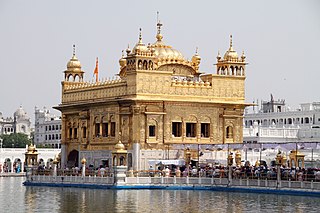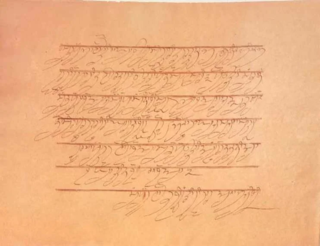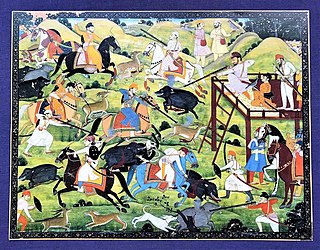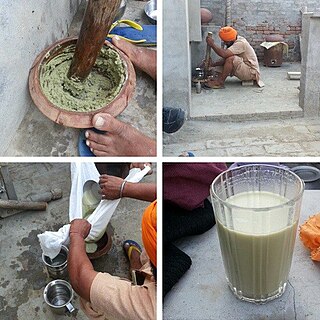| Part of a series on |
| Sikh practices and discipline |
|---|
|
| Part of a series on |
| Sikhism |
|---|
 |
Adherents of Sikhism follow a number of prohibitions. As with any followers of any faith or group, adherence varies by each individual.
| Part of a series on |
| Sikh practices and discipline |
|---|
|
| Part of a series on |
| Sikhism |
|---|
 |
Adherents of Sikhism follow a number of prohibitions. As with any followers of any faith or group, adherence varies by each individual.
These prohibitions are strictly followed by initiated Khalsa Sikhs who have undergone initiation. While the Sikh gurus did not enforce religion and did not believe in forcing people to follow any particular religion in general, the Sikh community does encourage all people to become better individuals by following the Guru's Advice (Gurmatta), as opposed to living life without the Guru's code of disciple (Man-mat):
4 major transgressions: [1]
Other mentioned practices to be avoided, as per the Sikh Rehat Maryada:

Sikhism, also known as Sikhi, is an Indian religion and philosophy in particular for the Sikh ethnoreligious group that originated in the Punjab region of India around the end of the 15th century CE. The Sikh scriptures are written in the Gurumukhi script particular to Sikhs. It is one of the most recently founded major religious groups and among the largest in the world, with about 25–30 million adherents.

Khalsa refers to both a community that considers Sikhism as its faith, as well as a special group of initiated Sikhs. The Khalsa tradition was initiated in 1699 by the Tenth Guru of Sikhism, Guru Gobind Singh. Its formation was a key event in the history of Sikhism. The founding of Khalsa is celebrated by Sikhs during the festival of Vaisakhi.
The following outline is provides an overview of Sikhism, or Sikhi.

The Dasam Granth is a collection of various poetic compositions attributed to Guru Gobind Singh. The text enjoyed an equal status with the Adi Granth, or Guru Granth Sahib, in the eighteenth and nineteenth centuries and were installed side by side on the same platform. The Dasam Granth lost favor during the colonial period when reformist Singh Sabha Movement scholars couldn't contextualize the reworkings of Puranic stories or the vast collection of 'Tales of Deceit' Sri Charitropakhyan.

The Nishan Sahib in Sikhism is a triangular flag made of cotton or silk cloth, with a tassel at its end. The current form of the Nishan Sahib that is in use throughout Gurdwaras around the world has an orange (saffron) background color that has the Khanda symbol in the center of the flag. It is commonly hoisted on a tall flagpole outside Gurdwaras.

The Nihang or Akali, also known as Dal Khalsa, is an armed Sikh warrior order originating in the Indian subcontinent. Nihangs are believed to have originated either from Fateh Singh and the attire he wore or from the "Akal Sena" started by Guru Hargobind. Early Sikh military history was dominated by the Nihang, known for their victories where they were heavily outnumbered. Traditionally known for their bravery and ruthlessness in the battlefield, the Nihang once formed the irregular guerrilla squads of the armed forces of the Sikh Empire, the Sikh Khalsa Army.

The Akhand Kirtani Jatha, alternatively romanized as the Akhand Keertanee Jathaa and abbreviated as AKJ, is a jatha and sect of Sikhism dedicated to the Sikh lifestyle. The Jatha attempts to follow a strict discipline in keeping the Rehat of Guru Gobind Singh. They also enjoy an active style of Keertan recited by Sikhs in a collective manner in front of Guru Granth Sahib. This style of Keertan is relatively simple, and the entire congregation devotionally participates in singing along.

The Sarbloh Granth or Sarabloh Granth, also called Manglacharan Puran or Sri Manglacharan Ji, is a voluminous scripture, composed of more than 6,500 poetic stanzas. It is traditionally attributed as being the work of Guru Gobind Singh, the tenth Sikh guru. Scholars, on the other hand, attribute the work to after the Guru's death, being authored by an unknown poet. The work is mostly revered by the Nihang sect.
Rehat refers to the rules and traditions which govern the unique Sikh lifestyle and determines correct Sikh orthodoxy and orthopraxy. The Sikh Rehit Maryada is a code of conduct and conventions for Sikhism. The final version of the Rehat Maryada was controversially approved by the Shiromani Gurdwara Parbandhak Committee, Amritsar in 1945. The Rehat Maryada was created to provide guidance to Sikhs on practical and functional aspects of daily life, including the operations of Sikh Gurdwaras, and religious practices to foster cohesion throughout the community. Rehitnāma is a Punjabi term that refers to a genre of Sikh religious literature which expounds upon specifiying an approved way of life for a Sikh.

Chandi Di Var is a composition written by Guru Gobind Singh, included in the 5th chapter of Dasam Granth.
Sikh practices are guidelines laid out by the Gurus for the practice of the "Sikh way of life". The Gurus emphasise that a Sikh should lead a disciplined life engaged in Naam Simran, meditation on God's name, Kirat Karo, living an honest life of a house-holder, and Vand Chaako, sharing what one has with the community. This translates into hard work, honest living, love of fellow humans and through them service of the God, the primal power. This way of life is said to have been stripped of complications, myths, jargon, rituals and exploitation of man by man in the name of religion. No benefits are gained by where and to which family the person is born to – All have to undertake the rigours of Simran (meditation) and Sevā to progress spiritually. The Guru Granth Sahib asks the Sikh to "Practice truth, contentment and kindness.
Jhatka, or Jhataka, is the meat from an animal killed by a single strike of a sword or axe to sever the head within the Sikh religion, which kills the animal almost instantly as opposed to other forms of slaughter. This type of slaughter is preferred by most Sikhs, as well as meat-consuming Hindus and Buddhists. Also within this method of butchering the animal must not be scared or shaken before the slaughter.
The following list consists of concepts that are derived from both Sikh and Indian tradition. The main purpose of this list is to disambiguate multiple spellings, to make note of spellings no longer in use for these concepts, to define the concept in one or two lines, to make it easy for one to find and pin down specific concepts, and to provide a guide to unique concepts of Sikhism all in one place.
Followers of Sikhism do not have a preference for meat or vegetarian consumption. There are two views on initiated or "Amritdhari Sikhs" and meat consumption. "Amritdhari" Sikhs can eat meat. "Amritdharis" that belong to some Sikh sects are vehemently against the consumption of meat and eggs.

Eating meat among Nihang Sikhs employs technique of Jhatka is practiced by sects within Sikhism when consuming meat that is either hunted or farmed. This historical method of meat consumption is popular among Nihangs and Hazuri Sikhs who eat goats on the festivals throughout the year and distribute it as Mahaprashad among the rest of the Sikhs as part of Langar.

Hazur Sahib, also known as Takht Sachkhand Sri Hazur Abchalnagar Sahib, is one of the five takhts in Sikhism. The gurdwara was built between 1832 and 1837 by Maharaja Ranjit Singh (1780–1839). It is located on the banks of the Godavari River at the city of Nanded in the state of Maharashtra, India.

Jhatka Parkash ,also called Jhatka Parkash Granth, is a book written by Giani Niranjan Singh Saral, a leading preacher of the SGPC, concerning historical, philosophical, etymological and theological aspects of Jhatka and Meat eating in Sikh Religion.

Sikh sects, denominations, traditions, movements, sub-traditions, also known as sampardai in the Punjabi language, are sub-traditions within Sikhism that believe in different approaches to practicing the religion. All sampradas believe in the One Creator God typically rejecting both idol worship and caste systems. Different interpretations have emerged over time, some of which have a living teacher as the leader. The major historic traditions in Sikhism, states Harjot Oberoi, have included Udasi, Nirmala, Nanakpanthi, Khalsa, Sahajdhari, Namdhari Kuka, Nirankari and Sarvaria.

In Sikhism, some Sikhs particularly of the Nihang community use edible cannabis in a religious context. They make use of cannabis by ingestion. It is used to make a drink called "Shaheedi Degh" which is meant to help Nihang Singhs become highly present in the moment. Nihang Singhs used marijuana in the early times of Sikh history during times of battle, it is believed to help them become more fierce warriors.
Shastar Vidya, also known as Sanatan Shastar Vidya, is a Sikh martial art form dating back to the 17th century.
A Nihang carries out 'Chatka' on a 'Chatanga' (a specially selected goat for sacrifice).
The sexual intercourse item, however is evidently a modern development from the 18th century prohibition of intercourse with Muslim women.
Sources from the 18th century indicate that sexual contact with Muslim women was polluting, and Guru Gobind Singh is said to have commanded that during warfare they should not be seized for this purpose.